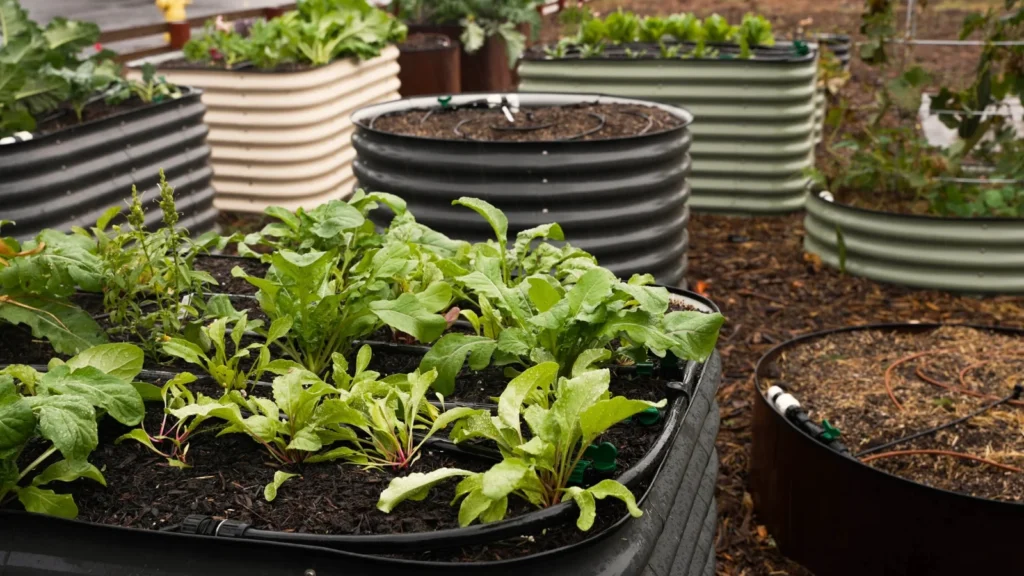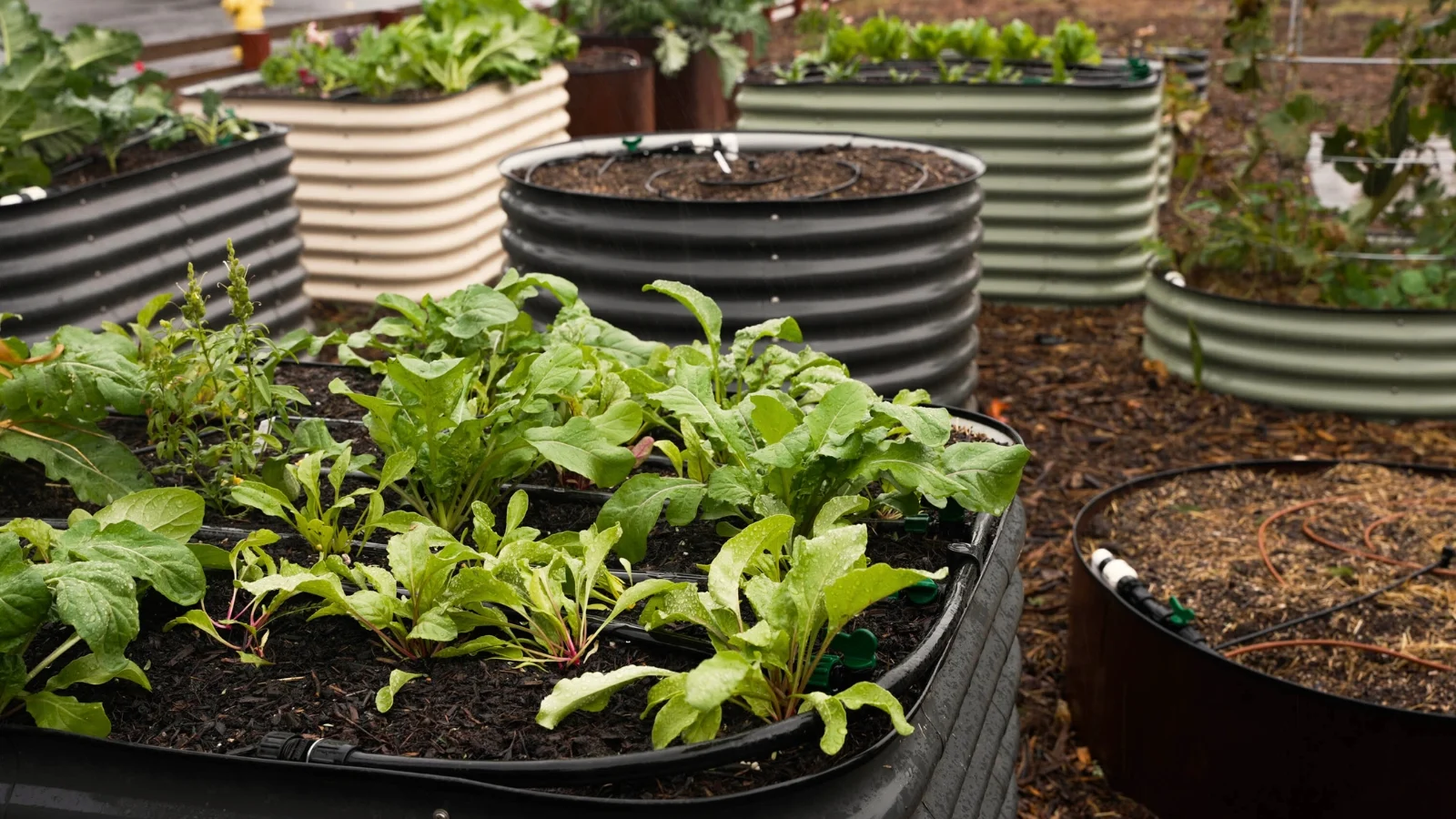
Thinking about upgrading your garden? Raised beds are a total game-changer. Not only do they improve drainage and help your plant roots stay healthy, but they also reduce the amount of digging you have to do and make gardening easier on your back. Plus, they just look great. But when it comes to actually setting up raised beds, should you buy them premade or build them yourself?
There are tons of options out there—from sleek metal to rustic cedar and even creative upcycled materials. If you’re not very handy and want to hit the ground running, a premade bed might be your best bet. But if you enjoy woodworking and want to customize every detail, then going the DIY route makes more sense.
This guide breaks down the pros and cons of each option so you can decide what works best for your budget, time, and gardening goals.
Quick Look: DIY vs. Store-Bought Raised Beds
| Type | DIY Raised Beds | Premade Raised Beds |
|---|---|---|
| Cost | Starting at $50 depending on materials and size | $100–$600, depending on size, material, and quality |
| Time Required | At least 3 hours (solo) | Less than 1 hour (solo) |
| Looks | Depends on your building skills | Professionally finished, sleek, and uniform |
| Customization | Fully customizable—build whatever you want | Modular designs with flexible layout options |
| Skills Needed | Basic to advanced carpentry | No skills required |
| Tools Required | Drill, saw, sander, etc. | Just a level and screwdriver |
| Durability | Varies based on build quality and materials | Built to last 10–20 years, often with a warranty |
| Materials | Anything you can source—wood, logs, scraps | Usually limited to cedar or metal |
| Height Options | Customizable to any height | Comes in standard 15″ or 29″ heights |
Should You Build or Buy Raised Beds?
No matter which route you take, raised beds will upgrade your gardening game. Both DIY and store-bought options offer great benefits, but the decision comes down to how much time, money, and effort you want to put in.
If you’re eager to get started right away, go with a premade raised bed kit. Whether you prefer wood or metal, these kits come with everything you need and can be set up in under an hour—no tools, no stress. The price is usually comparable to what you’d spend buying materials yourself, especially considering the time you’ll save.
On the flip side, if you’ve got the tools and skills—and maybe a free weekend—building your own can be more rewarding and allows for full creative control. You can even reuse materials you already have on hand, which is both budget-friendly and sustainable. Just keep in mind that DIY can end up costing more than expected, especially if you’re new to carpentry or make a few mistakes along the way.
From personal experience, my plants have grown just as well in DIY beds as they have in store-bought ones. But if you want a neat, uniform look and the option to add more beds easily over time, premade kits are the way to go.
8 Key Things to Consider Before You Decide
1. Cost
Prices vary a lot depending on what materials you use. DIY beds can start around $50 if you’re savvy with your materials, but for beginners, the total cost can creep up quickly once you factor in lumber, tools, and hardware.
Premade beds generally cost between $100–$600 depending on the size and material. For example, cedar kits often fall in the $250–$350 range. Thanks to bulk manufacturing and efficient shipping, you might actually save money by buying a ready-made kit—especially since things like cedar are often much cheaper through trusted manufacturers than at local hardware stores.
2. Time Investment
Store-bought kits are all about convenience. You can go from unboxing to planting in under an hour. Everything is pre-cut and designed to go together easily.
DIY beds, on the other hand, will take at least a few hours. If you’re building from scratch, expect anywhere from 3 to 6 hours depending on your tools, skills, and how many beds you’re making. It’s a great project if you have the time—or some extra hands around the house.
3. Skill Level and Tools
If you’re new to gardening and carpentry, a store-bought kit is probably the safer bet. No drills, saws, or special tools required. Just a screwdriver and a level.
Building your own beds means you’ll need a decent tool collection and at least some carpentry experience. Mistakes can be costly. I once tried to build my own to save money and ended up spending almost as much as I would have on a nice premade one—plus I made a few errors that made the beds look a little wonky.
But if you already have tools and enjoy DIY projects, building your own can definitely be more economical—and more fun.
4. Materials
Wood and galvanized metal are the go-to choices for raised beds. If you build your own, you’ll need to source your materials carefully. Regular construction lumber might be cheaper, but it won’t last as long and could rot quickly. Treated wood can contain toxins, so it’s not great for growing food.
Premade kits usually use high-quality materials that are safe for gardening. For example, Birdie’s Metal Beds are made from aluzinc steel, coated with food-safe paint, and designed to last over 20 years. That kind of reliability can be hard to replicate on your own.
5. Height and Accessibility
Standard premade beds usually come in heights like 15″, 29″, or even elevated versions around 31″. These are great for ergonomic gardening—no more stooping or backaches.
If you need something more specific (for mobility reasons, accessibility, or just personal comfort), DIY beds give you full control over height and shape. Just keep in mind: the taller the bed, the more soil you’ll need, which can add to the cost.
6. Sustainability
DIY building is a great way to repurpose and recycle materials. Fallen logs, reclaimed wood, leftover construction supplies—you name it. As long as the materials are safe for growing food, the sky’s the limit.
Store-bought beds can also be very eco-friendly if you buy from the right source. Some companies use sustainably harvested wood, solar-powered manufacturing, and recycled steel. For example, Epic’s cedar beds are made in the U.S. with sustainably sourced wood, and their metal beds are made in Australia with 100% renewable energy.
7. Customization
Got a small or odd-shaped yard? DIY gives you complete flexibility. You can build beds in any shape—hexagonal, heart-shaped, you name it—and stain or paint them however you like.
Modern prefab kits have come a long way, though. Many now include modular panels that let you create different shapes and sizes to suit your space. You won’t get the same level of freedom as with DIY, but you still have a lot of options.
8. Appearance and Aesthetics
The way your garden looks is a big deal! Store-bought beds give you that clean, uniform look that’s hard to beat. They’re especially great if you want a sleek, modern vibe. Matching metal beds in neat rows, surrounded by tidy walkways? Chef’s kiss.
DIY beds can also look beautiful, especially if you’re experienced with carpentry. Wood grain and rustic finishes give a cozy, farmhouse feel. Just be aware that uneven cuts or warped boards can make your garden look a little rough around the edges if you’re still learning the ropes.
Final Thoughts
Premade raised beds have really improved in terms of quality, price, and eco-friendliness. They’re a great option for beginners, or anyone who wants to get their garden going fast without the hassle of sourcing materials or using power tools.
But if you’ve got the time, tools, and creativity, DIY beds can be incredibly rewarding. You’ll save money (eventually), reduce waste, and build something totally unique.
Personally? I like to mix both. A few sleek, store-bought beds for the main area, and some fun homemade ones for the back corners. That way, I get the best of both worlds—functionality and flair.

